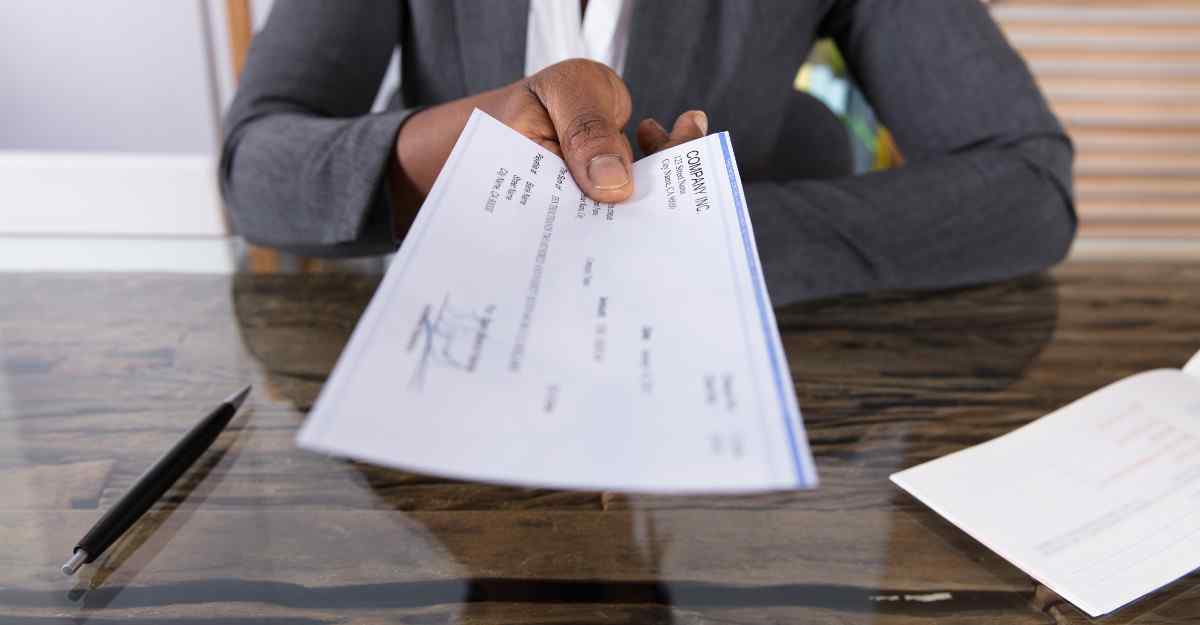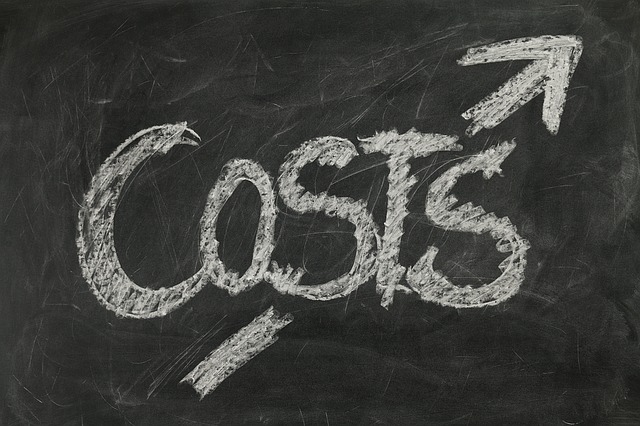How to Stop Living Paycheck to Paycheck: A Comprehensive Guide
The percentage of Americans living paycheck to paycheck is almost staggering: almost 80% of individuals find themselves ensnared in a financial bind, living paycheck to paycheck, unable to muster even $600 for an unexpected expense.
Imagine that you've just paid your essential bills, and before you know it, your paycheck has vanished into thin air. This is the harsh reality for many Americans today. Nearly 40% of American adults now say they have difficulty covering monthly expenses, up from 34.4% in 2022 and 26.7% in 2021. The ramifications are profound, from the inability to save for retirement or emergencies to the strain on credit scores and overall financial well-being.
 However, amidst these daunting numbers lies a beacon of hope: a solution exists. This article aims to delve into how to stop living paycheck to paycheck, offering actionable strategies to break free from this cycle of financial strain. If you want to learn how to not live paycheck to paycheck, keep reading.
However, amidst these daunting numbers lies a beacon of hope: a solution exists. This article aims to delve into how to stop living paycheck to paycheck, offering actionable strategies to break free from this cycle of financial strain. If you want to learn how to not live paycheck to paycheck, keep reading.
You may ask yourself, “How can I stop living paycheck to paycheck?” That’s where we come in. In this article, we will break down the 10 effective ways to stop living paycheck to paycheck. These tips are meant to guide you through your finances and help you become a more responsible and financially independent individual. We will dive into specific methods, from budgeting and reducing expenses to increasing income and saving wisely. Be sure to approach these strategies with an open mind and a commitment to change as you navigate through each step toward financial stability.
The top 10 ways to stop living paycheck to paycheck are:
- Create a Budget
- Cut Back on Expenses
- Build Emergency Savings
- Reduce Debt
- Boost Your Income and Earn Extra Money
- Automate Finances
- Live Within Your Means
- Save for the Future
- Educate Yourself Financially
- Review Finances Regularly
The first step toward no longer living paycheck to paycheck is creating a budget. This includes how much money is coming in, how much money is being spent on necessary things, and how much discretionary income is left over.
Necessary spending includes things that must be paid for, such as rent or a mortgage, utility bills, insurance payments, and food.
While the items on this list are necessary, many of them can be adjusted. Rent may be a concrete obligation, but utility bills can be lowered by adjusting the thermostat so it doesn't keep the house as cool while no one is in it. Take short showers and use the dishwasher only when it’s full to lower the water bill. Shop around for the best car insurance quotes, then bundle items like car insurance and renter's insurance to save even more.

Student loan payments can be extremely expensive, and complete student loan debt forgiveness is only available to a select few. However, adjusted repayment plans are easy to apply for by going through the student loan servicer who provided the loan. Food bills can be trimmed by limiting going out to eat and making cost-effective meals throughout the week. Change to a more affordable cell phone carrier to lower monthly phone bills.
There are other ways of trimming spending, such as:
- buying energy-efficient light bulbs
- carpooling to work
- using coupons
- inquiring about discounts for students, seniors, employees, or locals
- stopping unnecessary monthly subscriptions
- ending gym memberships
The idea is to trim back wasteful spending until there is room to breathe. These are just a few ways how to save money when you live paycheck to paycheck.
How can you reduce the habit of living paycheck to paycheck? Start by scrutinizing your spending habits and identifying areas where you can trim costs. Look for non-essential expenses that you can eliminate or reduce, such as dining out less frequently, canceling subscription services you don't use, or finding cheaper alternatives for everyday purchases.
Avoiding payments for life may seem daunting, but making conscious choices to reduce unnecessary expenses can make a significant difference. Consider renegotiating bills or switching to cheaper providers for services like cable, internet, or insurance. Additionally, explore opportunities to save on big-ticket items by buying used or opting for generic brands instead of name brands. Embrace a frugal mindset and get creative with finding ways to save money in every aspect of your life.
Emergencies are inevitable, but having a financial safety net can help you weather unexpected expenses without falling deeper into the paycheck-to-paycheck cycle. To start an emergency fund, there are a few things you can do:
- Designate a separate savings account specifically for this purpose - Begin by setting a realistic goal for your emergency fund, aiming to save at least three to six months' worth of living expenses.
- Treat your emergency fund as a priority expense, allocating a portion of each paycheck towards building it up.
- Consider automating transfers to your savings account to make the process effortless and consistent.
- To avoid payments for life, resist the temptation to dip into your emergency fund for non-emergencies.
- Establish clear criteria for what constitutes an emergency, such as medical expenses, car repairs, or job loss, and stick to them strictly.
By building a robust emergency fund and refraining from unnecessary withdrawals, you can break the cycle of relying on each paycheck to cover unexpected expenses.
The target amount for financial security varies depending on individual circumstances, but aiming for three to six months' worth of living expenses is a common guideline. This provides a buffer to cover essential expenses in case of job loss or other financial setbacks.

However, if you have dependents or work in a volatile industry, you may want to aim for a larger emergency fund to provide additional security. Start small and gradually increase your savings contributions as your financial situation improves, focusing on consistency and discipline to achieve your savings goals.
Saving Money in a Multi-Tiered Process
Practice saving money little by little. Experts recommend approaching saving money in a multi-tiered process:
- Put no less than $500 away in a savings account in the event something goes wrong.
- Look into an employer 401(k) contribution match. Do you have one? Then try to get the maximum match; after all, it's free money.
- Eliminate the most expensive, high-interest debt. If this step seems impossible to complete within five years, consider debt counseling or possibly filing for bankruptcy.
- Contribute 15 percent of after-tax income to retirement.
- Build up savings equal to three to six months' worth of living expenses in the event of a job loss or medical emergency.
- Pay off the remaining debt and, finally, continue tucking money into that retirement fund.
- Have a percentage of that paycheck automatically drafted into a savings account before it even becomes spendable.
- Employers often offer the option of squirreling 401(k) deductions, along with their matching contributions, into a retirement account that employees can't access without incurring a penalty. The penalties are steep, too—a powerful deterrent that will help protect retirement funds.
Next, we'll look at discretionary income, which is whatever money is left over after all bills have been paid. This money is technically up to the spender to use however they see fit. It is used to pay for entertainment, shop for clothes, make impulse purchases, and set aside for savings.
The most important expense out of all these is savings, of course, but it must be pointed out that people need recreational outlets as well. Too much restriction leads to a buildup of stress. But free museums, concerts, picnics with friends, and afternoons grilling by the community pool are all wallet-friendly sources of relaxation.
About 20 percent of after-tax income should be allocated for savings and paying off existing debt. This amount may seem impossibly high for some people and rightfully so; however, it is important to have money in the bank to pay for an emergency. So is having money going towards retirement and paying down debt like high-interest credit card debt and loans.
Learning how to get out of debt living paycheck to paycheck can seem like an uphill battle, but the following strategies can help you gain control of your finances.
- Start by assessing what you owe currently, including credit cards, loans, and other liabilities.
- Prioritize your debts based on factors such as interest rates and balances, focusing on high-interest payments first to minimize costs over time.
- Consider consolidating financial obligations into a single, lower-interest loan or transferring balances to a credit card with a lower APR to streamline repayment.
Two common repayment strategies are the debt avalanche and debt snowball methods.
- The debt avalanche method involves prioritizing liabilities with the highest interest rates while making minimum payments on the rest. After paying off the most expensive liability, you move on to the next highest, gradually reducing your financial burdens and minimizing interest costs.
- On the other hand, the debt snowball method focuses on paying off the smallest liabilities first, regardless of interest rates, to build momentum and motivation.
While both methods have their merits, choose the one that aligns best with your financial situation and goals.
There are several strategies you can employ to boost your income, both in the short term and the long term. Consider taking on freelance gigs, part-time jobs, or selling unused items online. These can provide quick cash injections to help alleviate immediate financial strain.
For long-term income growth, invest in education or training to enhance your skills and qualifications, which can lead to higher-paying job opportunities or career advancement. Additionally, consider starting a side business or pursuing passive income streams such as rental properties or investments. By diversifying your income sources, you can increase your earning potential and work towards achieving financial stability and prosperity.
 You can also try making money on the side. Forbes recommends a number of clever ways of adding more money to the bank account, including:
You can also try making money on the side. Forbes recommends a number of clever ways of adding more money to the bank account, including:
- asking for a raise
- freelancing after-hours
- waiting tables
- writing for a content website
- starting a YouTube channel
- walking dogs
- cleaning homes or businesses
Going back to school to gain a greater foothold in a current career may be a viable option – or it may not. Creating fresh student debt may only be taking a step back. Gaining more valuable experience, learning from others who have great reputations in the same field, and volunteering time where it counts are all efforts that may yield results as worthy and far less costly than returning to school.
Automating your finances can streamline your financial management process and provide numerous benefits. Start by setting up automatic bill payments for recurring expenses such as rent, utilities, and loans. This ensures that you never miss a payment deadline, avoiding late fees and potential damage to your credit score.
Additionally, automate your savings by setting up automatic transfers from your checking account to a savings or investment account. This "pay yourself first" approach helps you prioritize saving and building your financial future. By automating your finances, you can save time, reduce stress, and stay on track with your financial goals effortlessly.
Live Within Your Means
Living paycheck to paycheck can feel suffocating, but one key strategy to break free from this cycle is to live within your means. This means spending less than you earn and avoiding unnecessary expenses.
Create a budget that outlines your essential expenses, such as housing, food, transportation, and utilities, and prioritize these expenses above discretionary spending. Look for areas where you can cut back, such as dining out less frequently or finding more affordable housing options. By embracing a frugal lifestyle and making mindful spending choices, you can gradually reduce your reliance on each paycheck to cover expenses, ultimately breaking free from your debt.
Save for the Future
When you’re living paycheck-to-paycheck cycle, saving money for the future may seem like an impossible feat. However, you should prioritize saving, even if it's just a small amount each month.
Start by setting up automatic transfers from your paycheck to a savings account to make saving easier and more consistent. Additionally, contribute to retirement accounts such as a 401(k) or IRA, taking advantage of employer matching contributions if available. By consistently saving for the future, you can gradually build financial security and reduce the need to rely on each paycheck to cover large expenses.
Breaking free from the paycheck-to-paycheck cycle isn't just about making ends meet—it's about empowering yourself with financial knowledge. Start by exploring resources tailored to improving your financial literacy. Books like "The Total Money Makeover" by Dave Ramsey or "Rich Dad Poor Dad" by Robert Kiyosaki offer invaluable insights into money management and wealth-building strategies.
 Online platforms such as Investopedia and Khan Academy provide free courses covering a wide range of financial topics, from budgeting to investing. Additionally, consider tuning into personal finance podcasts like "The Dave Ramsey Show" or "BiggerPockets Money” for practical tips and expert advice. The key is to embrace continuous learning; the more you educate yourself about personal finance, the better equipped you'll be to make informed decisions and take control of your financial future.
Online platforms such as Investopedia and Khan Academy provide free courses covering a wide range of financial topics, from budgeting to investing. Additionally, consider tuning into personal finance podcasts like "The Dave Ramsey Show" or "BiggerPockets Money” for practical tips and expert advice. The key is to embrace continuous learning; the more you educate yourself about personal finance, the better equipped you'll be to make informed decisions and take control of your financial future.
Regularly going through your finances can help keep you on track with your money. Start by setting aside time each month to assess your finances thoroughly. Begin by reviewing your income sources, including your paycheck and any additional streams of revenue. Next, scrutinize your expenses, categorizing them into essential and discretionary spending. Look for areas where you can cut back, such as dining out less frequently or reducing subscription services.
Take stock of your savings and debt obligations, evaluating progress towards your financial goals. Are you steadily building your emergency fund? Are you making headway in paying down debt? By conducting these regular check-ups, you can identify areas for improvement and adjust your financial strategies accordingly.
To maintain consistency, consider setting a specific schedule for your financial reviews. Aim to conduct a thorough assessment at least once a month, ideally around the same time each month, to establish a routine. This regular cadence ensures that you stay on top of your finances and proactively address any emerging challenges. Additionally, schedule quarterly or semi-annual deep dives into your financial situation, where you can revisit long-term goals, assess investment performance, and make strategic adjustments to your financial plan.
Conclusion: Ending the Cycle of Living Paycheck to Paycheck
In this blog, we’ve explained how creating a budget, cutting back on expenses, building emergency savings, and reviewing your finances regularly can help you make significant strides toward improving your financial health. While change doesn't happen overnight, consistent effort in budgeting, saving, and spending wisely can lead to significant improvements in financial stability and teach you how to stop living paycheck to paycheck. Start with small, manageable steps and stay committed to your financial goals. With determination and discipline, you can take control of your finances and break free from the paycheck-to-paycheck lifestyle for good.





